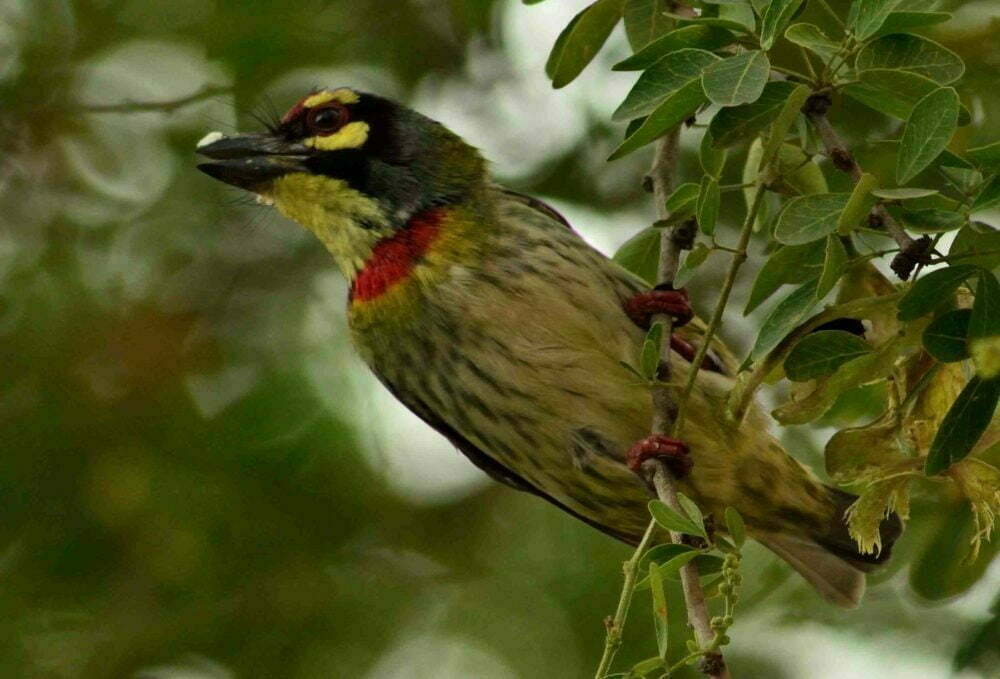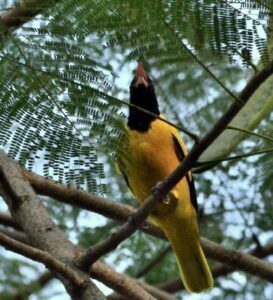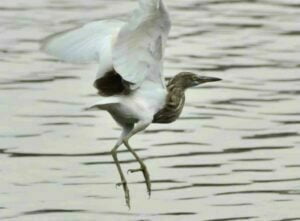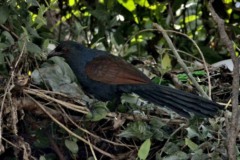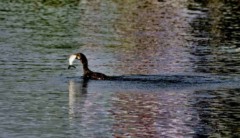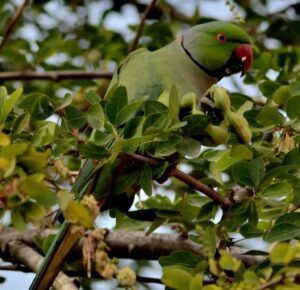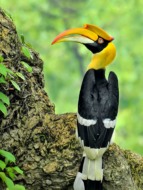The coppersmith barbet, whose scientific name is Psilopogon Haemacephalus and other names include “crimson-breasted barbet” and coppersmith, is an Asian barbet with a red forehead and throat. It is known for its rhythmic call, which sounds like a coppersmith hitting metal with a hammer. The Indian subcontinent and some parts of Southeast Asia are home to this bird. It makes its nest by making holes in a tree.
Coppersmith Barbet
It mostly eats fruit but has been seen eating insects, especially termites with wings. Coppersmith barbet’s Bengali name is Basanta Bauri/বসন্ত বাউরি. The coppersmith barbet’s head is red, its cheeks are yellow, and its throat is yellow. It has gray and black spots on the bottom of its body. During the nesting season, wear and tear on the feathers can make the upper back feathers look blue. It’s 15–17 cm (5.9–6.7 in) long and weighs 30–52.6 g (1.06–1.86 oz).
Coppersmith Birds Habitat
Distribution and habitat: It lives in gardens, groves, and patches of woods all over its range. Locations with dead trees where nests can be dug out are important. It is found below 1,200 m in the Palni Hills (4,000 ft). It grows in the valleys of the outer Himalayas up to 910 m (3,000 ft) in northern India.
It is rare in the states of northwest India and in Assam’s wet forests. In most of South Asia, the coppersmith barbet lives in the same places as several larger barbets. In the Western Ghats, its range meets up with the Malabar Barbet’s in some places.
Behavioral Ecology
Behavior and ecology: The coppersmith barbet lives alone or in small groups. Larger groups have been seen on Ficus trees with a lot of fruit. It seems to like to sunbathe in the morning on the bare branches at the top of tall trees, often moving around to sit next to each other.
It flies straight and flaps quickly. It must compete with other hole-nesting birds and fruit-eaters. Coppersmith barbets have been seen getting kicked out of their nest holes by blue-throated barbets, and red-vented bulbuls have been seen stealing berries from the male when the female brings them to the nest for the male.
Coppersmith Barbet Nest
The nest holes are also used to sleep in, and some birds sleep alone in holes, which is where they usually sleep during the day. Young birds will roost with their parents, but they often go back to roost early so that their parents don’t stop them from getting into the roost cavity.
Coppersmith Barbet Call
The call is a loud, metallic tuk-tuk-tuk or tunk that sounds like someone beating on a copper sheet. This is how the bird got its name. The call repeated over and over again for long periods of time, starting with a quiet tuk and building up to a steady volume and tempo that ranged from 108 to 121 beats per minute and went on for up to 204 notes.
In the winter, they are quiet and don’t make any noise. During each call, the bird’s beak stays shut. A patch of bare skin on both sides of its throat puffs up and down like a rubber bulb, and its head moves back and forth.
Coppersmith Bird Food
The coppersmith barbet likes to eat banyan, peepul, and other wild figs, as well as different drupes and berries and the occasional insect it catches in flight. It also eats the petals of flowers. It eats enough berries every day to weigh between 1.5 and 3 times its own body weight.
Coppersmith Bird Mating
Breeding: During courtship, birds sing, blow air out of their throats, move their heads, flick their tails, eat in a certain way, and clean each other. Birds use holes to nest and sleep. Depending on where it lives, it can breed for most of the year. In India, most of the breeding takes place from February to April, and in Sri Lanka, most of it takes place from December to September.
Both males and females dig out the nest on the bottom of a thin horizontal branch. They also sleep in the holes where the nests are. Three or four eggs are laid by the female. Both sexes can lay eggs. The time it takes for the egg to hatch is not well known, but it is thought to be about two weeks. Two nests are frequently raised shortly after each other.
Coppersmith Bird Life
Factors of death: Some predatory species sometimes eat adult birds. In cities, there have been reports of cars hitting buildings, including white walls. People have also been poisoned by pesticides. The Coppersmith Barbet The IUCN last looked at Psilopogon haemacephalus for its Red List of Threatened Species in 2016. “Least Concern” is what the list says about Psilopogon haemacephalus.
